MAC Valves Technology for Optical Sorting
The ultra-fast solenoid valve that gives your sorting system its precision and performance.
Industrial optical sorting relies on a rapid sequence between the optical detection of a product (via sensors, cameras, or spectrometers) and its targeted ejection if it fails to meet conformity criteria.
In these very high-throughput processes—sometimes several hundred ejections per second—performance does not depend solely on detection quality. It largely hinges on the speed, repeatability, and power of the air jet produced by the solenoid valve.
This is where MAC Valves technology makes the difference.
Thanks to their exceptional response time, extended service life, and ability to maintain consistent performance in harsh environments, MAC solenoid valves deliver more precise, faster, and more reliable sorting.
Learn more about optical sorting
The Three Main Families of Optical Sorting
MAC Valves are used across several types of optical sorting, each suited to a given product type or production line: air-jet sorting, pusher/paddle sorting, and free-fall sorting.
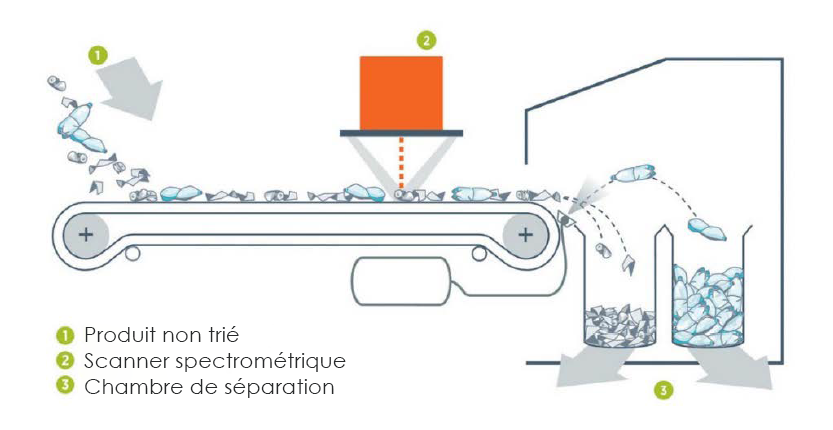
Air-Jet Sorting
Products are conveyed flat on a belt, pass in front of an optical sensor, then are sorted using an air jet expelled through a nozzle controlled by a solenoid valve.
Typical applications :
Recycling (plastics, paper, bottles)
Food industry (flat, dry products)
Sorting of industrial parts.
Technical specifics :
Blow from below, above, or both sides
Valves synchronized by detection
In-line valve bars
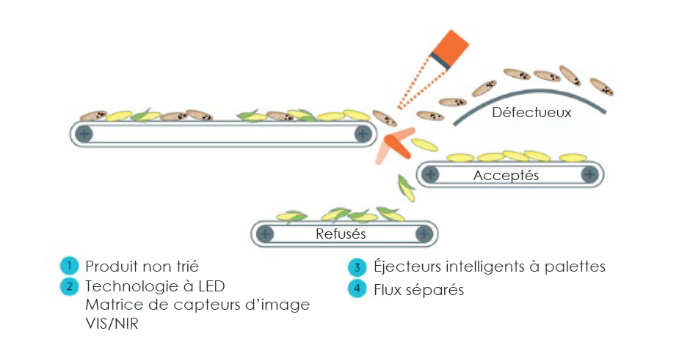
Pusher or Paddle Sorting
A product detected as non-compliant is physically pushed off the line using a pneumatic cylinder (controlled by a solenoid valve) or a rotary system.
Typical applications :
Food industry (fruits and vegetables, potatoes, tomatoes, citrus, etc.).
Particular features:
Suitable for unstable or rolling products
Controlled ejection force
Reduced risk of product damage
Technical specifics :
Requires a fast, consistent solenoid valve (dedicated MAC Valves ranges).
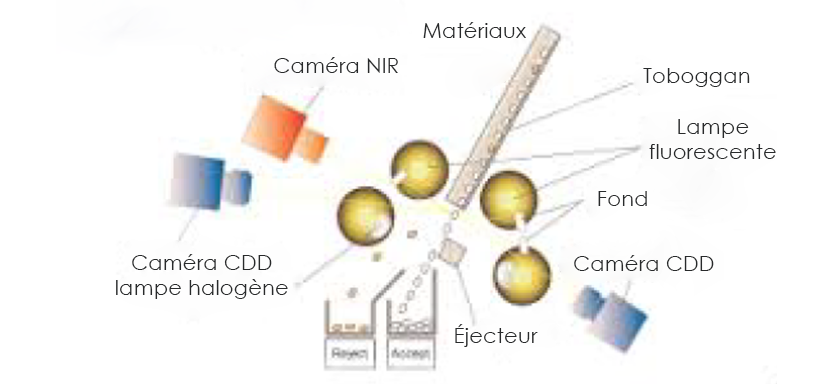
Free-Fall Sorting
Products fall in free fall in front of a camera. When a product must be ejected, a vertical air jet is triggered via a nozzle controlled by a solenoid valve.
Typical applications :
Food industry (rice, grains, coffee, lentils, pellets, seeds, etc.).
Particular features:
No conveyor required
Very high precision in flow
Suited to high speeds for small, light, fast-moving products.
Technical specifics :
64 to 320 channels in parallel
Direct control from the optical controller
Compact, high-frequency solenoid valves.
Free-Fall Sorting
Products fall in free fall in front of a camera. When a product must be ejected, a vertical air jet is triggered via a nozzle controlled by a solenoid valve.
Typical applications :
Food industry (rice, grains, coffee, lentils, pellets, seeds, etc.).
Particular features:
No conveyor required
Very high precision in flow
Suited to high speeds for small, light, fast-moving products.
Technical specifics :
64 to 320 channels in parallel
Direct control from the optical controller
Compact, high-frequency solenoid valves.
How Do Solenoid Valves Work?
In an optical sorting system, the quality of the air jet depends not only on the valve’s mechanics. The electrical drive signal is just as critical. It affects:
- Valve opening speed
- Cycle repeatability
- Heat generated in the coil
- Signal stability at high frequency
1
Square-wave signal (24 VDC)
The solenoid valve receives a square electrical signal at 24 VDC. The maximum on-time (coil energization time) may be limited depending on coil power.
Simple to use
No cable-length limitations
2
On-time + reduced holding voltage/current
The valve is driven by a square signal (e.g., 24 VDC) for a defined time to open. A lower holding voltage is then applied (e.g., 10 VDC) to keep it open, reducing energy while maintaining the active state.
No cable-length limitations
Faster de-energize time
Optimized power consumption
Less coil heating
3
On-time drive with PWM holding
(Pulse Width Modulation)
The valve receives a square signal (e.g., 24 VDC) for a defined time to open. A PWM signal is then applied to hold the valve, modulating delivered power to keep the state with reduced energy.
Single power supply required
Reduced de-energize time
Lower energy use
Less coil heating
4
PWM control via three-wire circuit
The PWM signal can also be delivered via a three-wire connection between the PLC and the valve. In this setup, the circuit handles power/current directly, while the PLC provides only the command signal (not the load power).
PLC does not source the current
PLC outputs only the trigger
Faster de-energize time
Reduced de-energize time
Less coil heating
Optional use of PWM technology
MAC Valves uses PWM as an option to save energy and/or protect the coil during long holding phases.
PWM can be integrated into your control electronics, into the control lead, or directly on the valve coil.
Easy installation
No overheating
Exceptional repeatability
High-frequency compatible
Impact of the signal on performance:
- Energize time
- De-energize time
- Pressure rise time at the nozzle
- Consistency of the air jet
A poorly defined drive signal can cause:
- Less accurate sorting
- Excess energy consumption
- Premature valve wear
Net Impact Force” (NIF): measuring the actual ejection force of your system
In high-throughput optical sorting, the air-jet power determines whether the targeted object is correctly ejected. But this power isn’t just a theoretical pressure or flow value: it is measured at the nozzle, at the exact moment the solenoid valve is activated. This is what MAC Valves calls Net Impact Force (NIF).
NIF is a standardized measurement of the impact force of the air burst at the nozzle outlet, expressed in grams or newtons. It accounts for:
- Solenoid valve response times (opening/closing)
- Air volume delivered over a very short duration
- The shape of the generated pressure waveform
- Mechanical design of the channel between valve and nozzle
It is measured using a dynamic piezo force sensor, an oscilloscope, or a standardized nozzle.

(Illustration: TLD OI Technologies, Net Impact Force type)
Phases of the air-jet impact
Mechanical response time (T0)
Time between the start of the electrical signal and the start of mechanical opening of the solenoid valve.
Pressure build-up (T1)
Filling of the circuit until the blow-off threshold is reached.
Actual impact (T2)
(T2)
Onset of the mechanical ejection force acting on the target object.
Actual impact (T2)
(T2)
Onset of the mechanical ejection force acting on the target object.
De-energize (T3)
Time between cutting the electrical signal and the start of mechanical closing of the solenoid valve.
De-energize (T3)
Time between cutting the electrical signal and the start of mechanical closing of the solenoid valve.
End of ejection impact (T4)
End of the ejection force acting on the object.
End of ejection impact (T4)
End of the ejection force acting on the object.
Drain
(T5)
End of purging of the ejection circuit.
Drain
(T5)
End of purging of the ejection circuit.
Optimizing Optical Sorting via Pneumatic Circuit Design
The channel connecting the valve outlet to the nozzle should be as short as possible, with a constant diameter and no turbulence. This ensures laminar flow, minimal pressure loss, and a more consistent jet.
Nozzle design influences jet shape, concentration, reach, and response to pressure.
Valve type selection: axial or radial flow
MAC Valves for Optical Sorting
The patented Bullet Valve®, featuring MAC’s latest technology, uses a specific design that guarantees extremely precise response times and flow rates. The Bullet Valve® flow is factory-set during assembly to your application by simply adjusting the poppet stroke.
Adjusting the stroke between the permanent magnet and the poppet in the coil also improves valve-to-valve repeatability of response times.
These two essential MAC characteristics are checked on every valve at end-of-line (not by sampling), enabling production of valves with identical response times and flow rates.
1- Bullet Valves® — Series BV210, BV214, BV221

General features
Multiple seal and body materials
Fast response times
Excellent cycle-to-cycle repeatability
Low-friction design
High actuation forces

Benefits
Compatible with numerous gases and fluids
Excellent sealing
Fewer wear points than traditional technologies
Long service life
Virtually zero dead volume

2- Bullet Valves® with Double Diaphragm — Series BV210DD to BV221DD

General features
Very short response times thanks to reduced friction
High repeatability.
Pressure-balanced design
Factory-set flow adjustment available
MAC Valves technology

Benefits
Ideal for variable-pressure applications
Very precise dosing
Quiet operation
Customizable
High flow in a compact footprint

3- Pneumatic Solenoid Valves for Air-Jet Sorting — Series 34, 52, 72
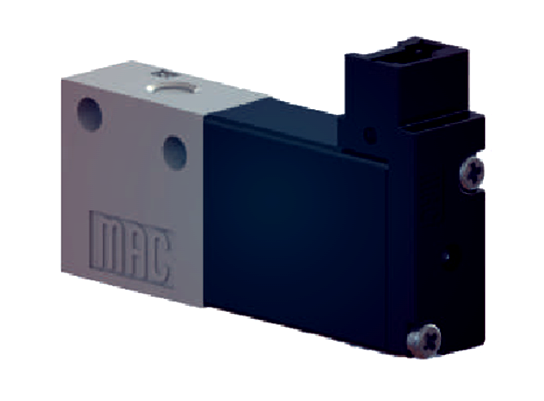
Series 34 — 3/2
- High flow in a small footprint
- Fast response times
- Very long life (estimated: 1 billion cycles)
- Large-diameter body bore
- Conical seat
- RPTE to ensure consistent response times (RPTE = MAC proprietary technology)
- 10 mm, direct-acting valve
- Balanced poppet, insensitive to pressure variations
- Patented coil generating high shifting forces
- Powerful return spring
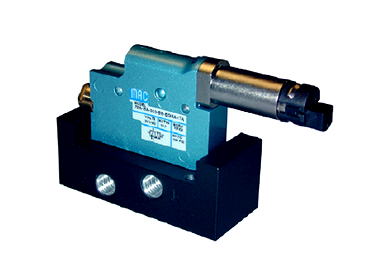
Series 72 — 3/2
- Balanced poppet
- Patented conical seats for extended life
- High flow
- Overmolded low-friction poppet
- Wiping effect prevents sticking
- Extremely high repeatability
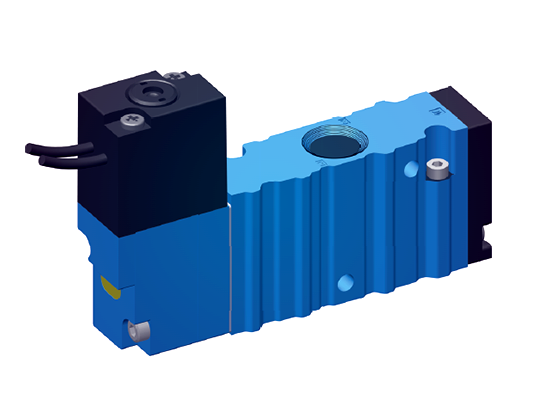
Series 52 — 4/2
- Four-way pilots generating maximum shifting force in both directions
- Pressure-balanced spool, insensitive to pressure variations, ensuring high flow
- Short stroke with high flow
- Overmolded low-friction spool sliding in a mirror-finish bore
- RPTE technology for consistent response times
- Wiping effect eliminates sticking risk
- Long service life
- High-speed response
- High flow in a compact design
4- Pneumatic Solenoid Valves for Paddle Ejection — Series 400
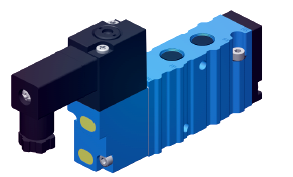
Series 400 — 5/2
- 5/2 pilot generating maximum shifting force in both directions
- Memory spring available
- Pressure-balanced spool, insensitive to pressure variations, delivering high flow
- Short stroke with high flow
- Overmolded low-friction spool sliding in a mirror-finish bore
- Wiping effect prevents sticking
- Long service life
Our components
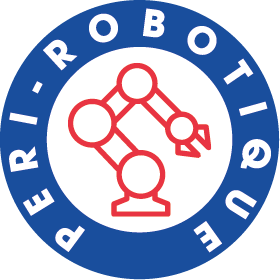
Peri robotic

Mecatronic

All fluid





